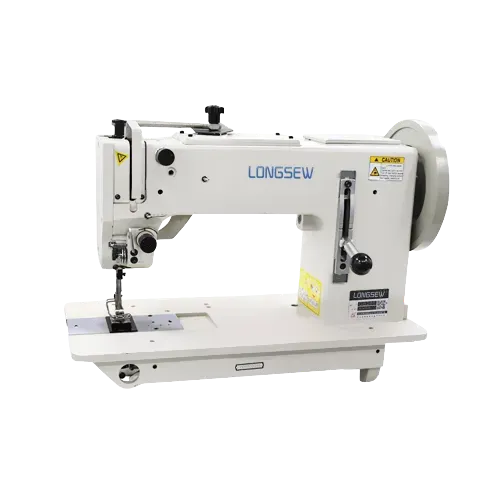Efficient Industrial Overlock Machines for Seamless and Professional Stitching
The Importance of Industrial Overlockers in Modern Textile Manufacturing
In the realm of textile manufacturing, efficiency and precision are paramount. Among the numerous machines that play a pivotal role in this sector, the industrial overlocker stands out as an essential tool. These machines, often referred to as sergers, are designed to provide seamless edges and finish raw hems, ultimately elevating the quality and durability of fabric products.
Understanding the Overlocker
An industrial overlocker operates by using multiple threads to create a stitch that not only binds the fabric pieces together but also prevents fraying. Unlike traditional sewing machines, which typically use a forward stitch, overlockers employ a looping technique that encases the fabric edges. This allows for greater stretch and flexibility, making the overlocker particularly suitable for knit fabrics and other materials that require elastic properties.
Speed and Efficiency
One of the greatest advantages of using an industrial overlocker is its speed. In a fast-paced production environment, the ability to quickly and efficiently finish edges can significantly impact overall productivity. Industrial overlockers can sew at speeds exceeding 7,000 stitches per minute, allowing manufacturers to keep up with high demand while maintaining the quality of their products.
The design of industrial overlockers also emphasizes user-friendliness. They are built with ease of operation in mind, featuring adjustable settings that enable operators to switch between different types of stitches and fabric easily. This adaptability is crucial in modern textile manufacturing, where customization and rapid turnaround times are often necessary.
Quality and Durability
industrial overlocker

In addition to speed, industrial overlockers contribute to the overall quality of textile products. The stitches created by these machines are not only more secure but also offer a professional finish that is difficult to achieve with conventional sewing methods. This is particularly important for garments that undergo significant wear and tear, such as workwear or activewear.
By investing in an industrial overlocker, manufacturers can enhance the durability of their products; garments remain intact and “look good” even after multiple washes. The neat, finished edges provided by an overlocker also add a touch of quality that can be a significant differentiator in a competitive market.
Versatility Beyond Apparel
While many associate overlockers primarily with garment construction, their versatility extends beyond clothing. They are increasingly being used in various industries, including home textiles, automotive upholstery, and even medical textiles. For instance, in the production of upholstery, overlockers can help finish seams that will withstand the stresses of daily use. Similarly, in medical textiles, the precision and strength of overlocked stitches are essential for creating reliable, sterile products.
Future Trends
As technology advances, industrial overlockers are becoming smarter and more efficient. Innovations such as automated threading systems, digital stitch selectors, and integration with computer-aided design (CAD) software are enhancing the capabilities of these machines. Manufacturers are continuously looking for ways to increase efficiency and reduce waste, making smart overlockers an appealing investment.
Conclusion
In conclusion, industrial overlockers are a cornerstone of modern textile manufacturing. Their ability to provide speed, efficiency, and high-quality finishes allows manufacturers to meet ever-increasing demands for quality and customization. As the industry continues to evolve, the role of overlockers will likely expand, solidifying their importance in the future of textile production. For manufacturers seeking to improve their output and product quality, investing in industrial overlockers is a decision that promises significant returns.
-
Boost Production Efficiency with a Pattern Sewing MachineNewsAug.29,2025
-
Industrial Excellence with the Best Heavy Duty Sewing MachineNewsAug.29,2025
-
Precision and Power with the Best Pattern Sewing MachineNewsAug.29,2025
-
Reliable Bulk Packaging Starts With the Right FIBC Sewing MachineNewsAug.29,2025
-
Advanced Packaging Solutions: Elevate Productivity with Jumbo Bag Sewing Machine and Industrial Stitching EquipmentNewsAug.29,2025
-
High-Performance Solutions for Bulk Packaging: FIBC Sewing Machine and MoreNewsAug.29,2025
-
Maximize Efficiency with an Industrial Cylinder Arm Sewing MachineNewsAug.28,2025


























